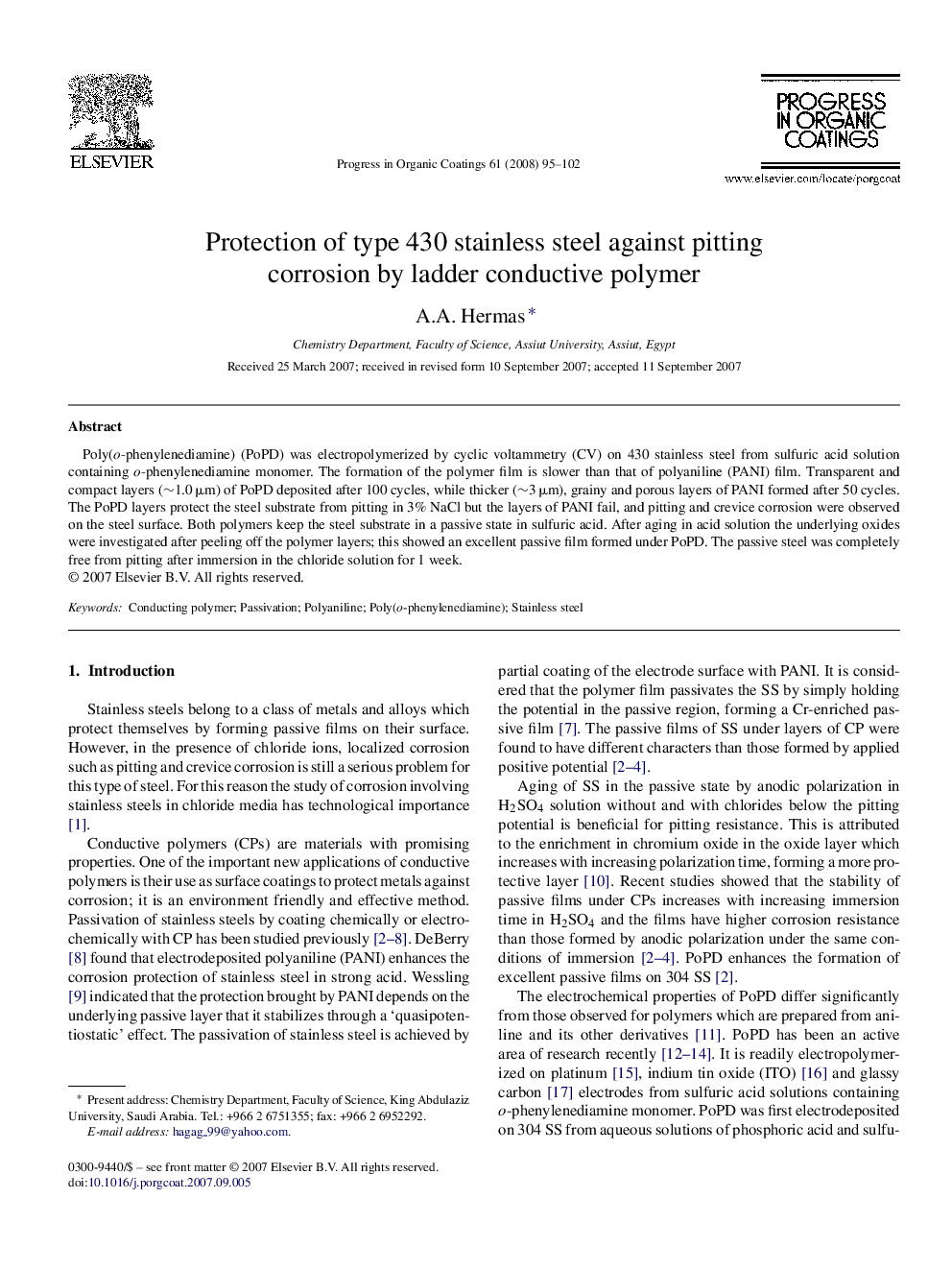| Article ID | Journal | Published Year | Pages | File Type |
|---|---|---|---|---|
| 693657 | Progress in Organic Coatings | 2008 | 8 Pages |
Abstract
Poly(o-phenylenediamine) (PoPD) was electropolymerized by cyclic voltammetry (CV) on 430 stainless steel from sulfuric acid solution containing o-phenylenediamine monomer. The formation of the polymer film is slower than that of polyaniline (PANI) film. Transparent and compact layers (â¼1.0 μm) of PoPD deposited after 100 cycles, while thicker (â¼3 μm), grainy and porous layers of PANI formed after 50 cycles. The PoPD layers protect the steel substrate from pitting in 3% NaCl but the layers of PANI fail, and pitting and crevice corrosion were observed on the steel surface. Both polymers keep the steel substrate in a passive state in sulfuric acid. After aging in acid solution the underlying oxides were investigated after peeling off the polymer layers; this showed an excellent passive film formed under PoPD. The passive steel was completely free from pitting after immersion in the chloride solution for 1 week.
Related Topics
Physical Sciences and Engineering
Chemical Engineering
Process Chemistry and Technology
Authors
A.A. Hermas,
